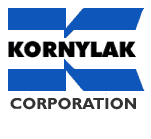
Kornylak Corporation
400 Heaton St.
Hamilton, OH 45011
PH: 513.863.1277
TF: 800.837.5676
F: 513.863.7644
News: Cat-Trak Rollers Defined
News: Cat-Trak Roller
• Home
• Corporate Facts
• Contact Us
• FAQ
• Information Request
• Links
• News
• Services
• Sitemap
• Privacy & Terms
<< Back
2006 Articles
• 2006 News
• New Superwheel
• Cat-Trak Rollers
• Pallet Flow
• Omniwheel
• Robotics News
2005 Articles
• 2005 News
2004 Articles
• 2004 News
The Differences Between The Cat-Trak Transwheel Rollers
October 5, 2006Cat-Trak Transwheels Are Robot Wheels With Grip

Cat-Trak Rollers Defined
People have asked. "What is the difference between the standard rollers and the Cat-Trak rollers?"
This is a good question. The standard roller that comes on a Transwheel® is made from Nylon. Nylon is hard and has a slick surface. It works great for sliding packages and other material across the rollers on turntables and other conveyors or material handing systems.
However, if you are using the wheels on robots you want traction. That is where the Cat-Trak rollers come into play. There are two types of Cat-Trak rollers available: synthetic rubber coated polypropylene and solid urethane roller with molded axle.

Note: the solid urethane roller is available only on the 4 inch Transwheel.
What's the Difference?
Both rollers work well and provide grip on slick surfaces. The major difference is that the urethane roller will deflect under a heavy load allowing the hard plastic surface of the Transwheel to touch the floor. For most circumstances, the synthetic rubber coated polypropylene roller is the best choice.
Cat-Trak's Big Idea
The idea for the Cat-Trak wheel was inspired by a university student who used the Transwheels on his robot. The problem was the robot had trouble climbing a slick wooden ramp. He wrote asking for a wheel with grip. After experimenting, the Cat-Trak solid urethane roller was created; however, it was only practical with the 4 inch wheel. This problem was solved by the rubber coated polypropylene roller.
Conveyors | Wheels | Insulation | Vehicles | Products | Literature | Sitemap
Robots | Services | Corporate Facts | Contact Us | FAQ | Info. Request | News
Resources | Links | Directories Links | Organizations Links | Publications Links
Copyright © 1998-2008 Kornylak Corporation